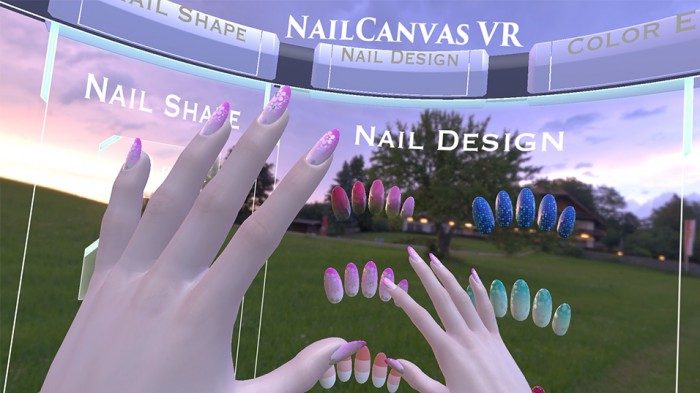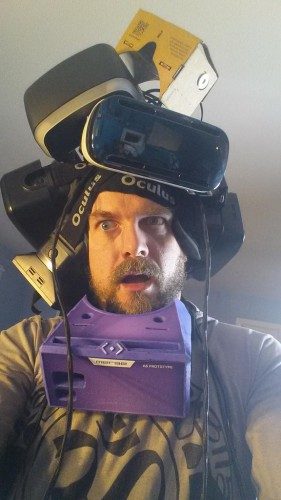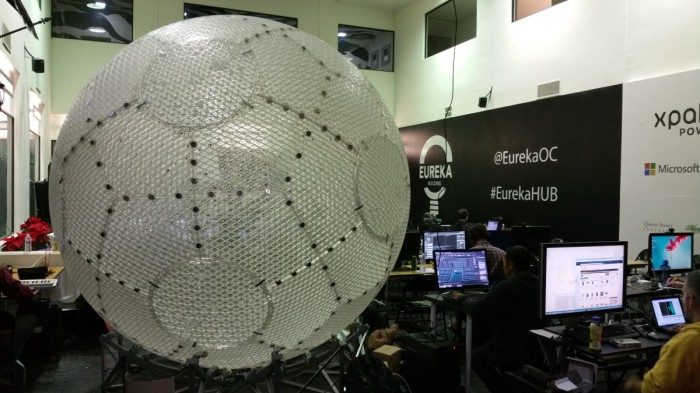CES 2015: First Look at Oculus’ Massive Two Story Booth
Oculus comes to the Consumer Electronics Show in Las Vegas this week with an open booth for the first time at the annual show. What’s more, the booth looks to be a monster.
Oculus comes to the Consumer Electronics Show in Las Vegas this week with an open booth for the first time at the annual show. What’s more, the booth looks to be a monster.

Have a hard time getting past the character selection screen of video games because you’re too busy picking out the perfect clothes and styling your hair just right? If so, there’s some fashion-oriented VR applications popping up that might be right down your alley, namely Voxcell Design’s NailCanvasVR, a tech demo that uses the Leap Motion hand-tracking controller, letting you virtually change the color and design of your nails without all of that nasty acetone (that you keep smelling up the bathroom with).

20th Century Fox are to debut a new VR movie proof of concept featuring Reese Witherspoon to promote the upcoming feature film Wild. The 3 minute experience is to be on show at CES in Las Vegas next week and top Fox executives seem to believe VR movies have a real future.
 There’s still time to cash in that cheque grandma gave you this holiday season (for piano lessons) and turn it into your favorite VR supported games, because Steam’s yearly Holiday Sale is coming to an end on January 2nd.
There’s still time to cash in that cheque grandma gave you this holiday season (for piano lessons) and turn it into your favorite VR supported games, because Steam’s yearly Holiday Sale is coming to an end on January 2nd.
No guest in this episode, just me standing on my pulpit. I had considered doing a recap of 2014, but instead decided to simply share some of my final thoughts on VR as 2014 closes, and a look forward to the potential that 2015 brings.

Having tracked the emerging consumer VR market for more than three years now, it’s hard to believe how fast it’s taking off. VR is steadily transforming from a promising technology to a disruptive one. And the proof is now plain for anyone to see: some of the biggest tech companies in the world have deemed the water fine and jumped in.
Today Samsung has announced that it’s adding a new member to the company’s family of curiously named ‘Milk’ services. ‘Milk VR‘—joining Milk Music and Milk Video—aims to offer a destination for curated VR video on the company’s Gear VR headset.
Two little games have been making a big splash with the VR community as of late, with their classic Micro Machines gameplay and solid Rift DK2 integration. Leading this pack of ‘tiny racers’, BlazeRush and Toybox Turbos showcase a masterful use of third-person point of view in a space once populated almost exclusively by first-person experiences, raising the question: are tiny racers here to stay?

During a recent virtual reality hackathon at OCVR, I was able to try out a crazy contraption called the Virtusphere—essentially a giant acrylic human hamster ball that lets the user feel like they are walking through a virtual world. It was an intense and exciting experience that I will never forget.
At Sony’s PlayStation Experience event earlier this month, the company brought together four prominent folks from the game industry to chat about the future of virtual reality and Sony’s ‘Project Morpheus’ VR headset for the PS4.